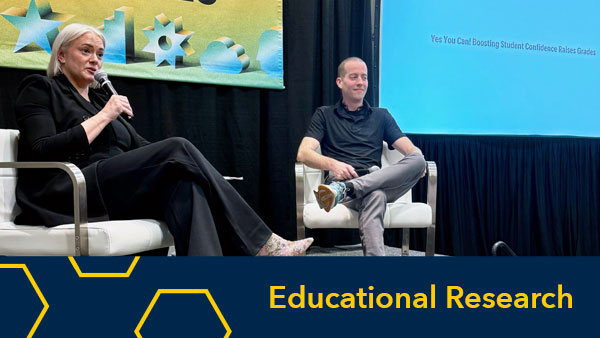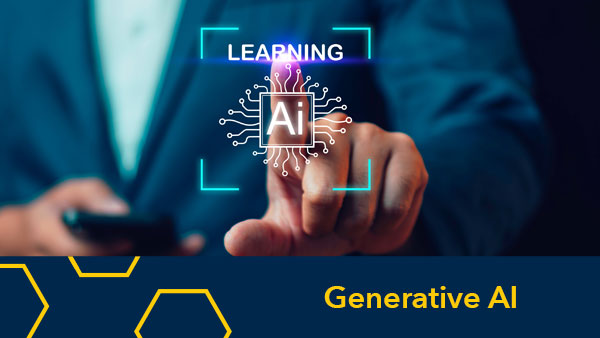Raven Lanier, Copyright Specialist
As the Copyright Specialist here at the Office of Academic Innovation, I answer a lot of questions about copyright and intellectual property (IP) in general. It can seem overwhelming when you first get in, but IP issues don’t have to be overwhelming. Being informed can help solve a lot of issues. And if you’re looking to be informed, you’ve come to the right place.
What is IP?

In the same way that the law protects you if your car is stolen, it also protects you if your creative work is stolen or used without your permission. IP is the umbrella term for the type of law that protects intangible property like expression, goodwill, and inventions. IP covers copyright, trademark, patent, and trade secrets, but each of these terms are distinct and protect their own distinctive things. Remember that although copyright, trademark, patent, and trade secrets all fit under the title of “IP,” it doesn’t work the other way around. For example, not all IP is copyright, but all copyright is IP.
Almost all IP issues we come across at Academic Innovation are copyright issues, with the occasional trademark issue thrown in here and there. Even so, it’s important to be aware of what patent and trade secret protection extends to. Patent covers inventors and their inventions. When an inventor invents something new, they apply for a patent. That patent gives them the ability to keep anyone else in the country from making the inventor’s invention. Trade secret, on the other hand, covers business secrets that give one company an advantage over another. The recipe for Coca-Cola is a common example of a trade secret.
What is trademark? Why does it matter to MOOCs?
Trademark law protects marks (words, images, colors, etc.) that are connected with a product/service and are bought and sold. The main goal of trademark is to keep people from getting confused while shopping. If you swung into the laundry detergent aisle and were confronted with a whole row of identical red bottles, some of which were not actually Tide or made by Tide, it would be a lot harder to find the Tide detergent you were looking for. Trademark law seeks to make things easier for us by keeping us out of these confusing situations. It wants us to be able to have a good experience with a brand, go to the store, and easily buy that same brand again. The law rests firmly on confusion; if there’s no confusion, you’re not infringing on the trademark. For example, you couldn’t use Tide for your own brand of laundry detergent, but you could use it for your new brand of potato chips because people wouldn’t expect them to be made by the same company.
Trademarks come up in MOOCs all the time. It would be nearly impossible to have a business-based MOOC and not use at least one brand or company logo as an example. But luckily, trademark law allows you to use a mark if you’re using the mark to refer to that brand. So, for instance, if a faculty member wanted to talk about the success of Toms’ 1:1 business plan, she could both say/show the word “Toms” and the Toms logo on the screen without worrying about trademark infringement because her use of the mark is referring to the brand.
What is copyright? Why does it matter to MOOCs?
Copyright protects original, creative works of expression that are fixed in a tangible medium. That’s a legalise way of saying that copyright protects things like stories, artwork, music, and even software, as long as they’re original and have been written down or saved in some form. Copyright was created to incentivize people to create new works, as well as promote learning and development. It gives copyright holders certain exclusive rights to use their work in different ways, and when using the work of others, you want to be cognizant of those rights. If you use a copyright holder’s work in a way that is not permitted by copyright, you could be sued by the copyright holder and have to take the work down.
Copyright is important in MOOCs because other peoples’ images, articles, videos, and audio are constantly added to courses. If you’re not cognizant of copyright, you could run into trouble later on. Before using others’ material, you want to consider if your use is a fair use or not. Fair use is an exception the law gives for uses that involve critique, commentary, or that are educational in purpose. In deciding whether a use is a fair use, you need to think about four factors:
- The purpose and character of your use, including how different your use is from the original work;
- Whether the original work is more factual or creative;
- How much of the original work you’re using, both quantitatively and qualitatively; and
- The effect of your use on the market for the original work.
Your use in a MOOC may very well be a fair use, since it’s usually for an educational purpose that is different than the original use and doesn’t harm the market, but there’s no guarantee. A final fair use decision can only be made by a court; even if your analysis is great, the copyright holder may disagree with you. When using a work under fair use, there will always be an element of uncertainty and risk. Make sure to always keep that in mind when thinking about whether to apply fair use, ask for permission, or select another work to use.
But there are ways to use outside content without having to worry about risk or infringing on another’s copyright. You can always look for content that’s in the public domain or licensed under a Creative Commons license. Works go into the public domain when the copyright holder puts them in the public domain or when the copyright in the work expires. Public domain works are not subject to copyright law; they are free for you to use and edit however you would like without any restraints. Creative Commons licenses allow copyright holders to grant everyone permission to use their works in certain ways. Creative Commons licensed material has a variety of conditions depending on the licenses, but most of them allow broad uses as long as you attribute the content to the original creator. Public domain and Creative Commons licensed material is readily available and easy to find using things like the Creative Commons Search.
Remember, spotting the IP issue and knowing what kind of issue you’ve got is the first step! Recognize when you may have a problem, and most importantly, don’t be afraid to ask for help.


